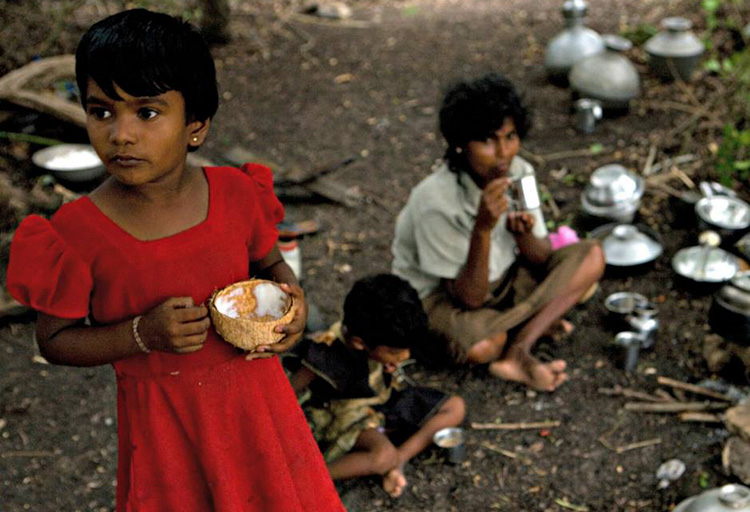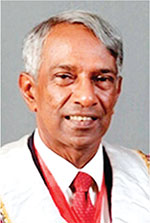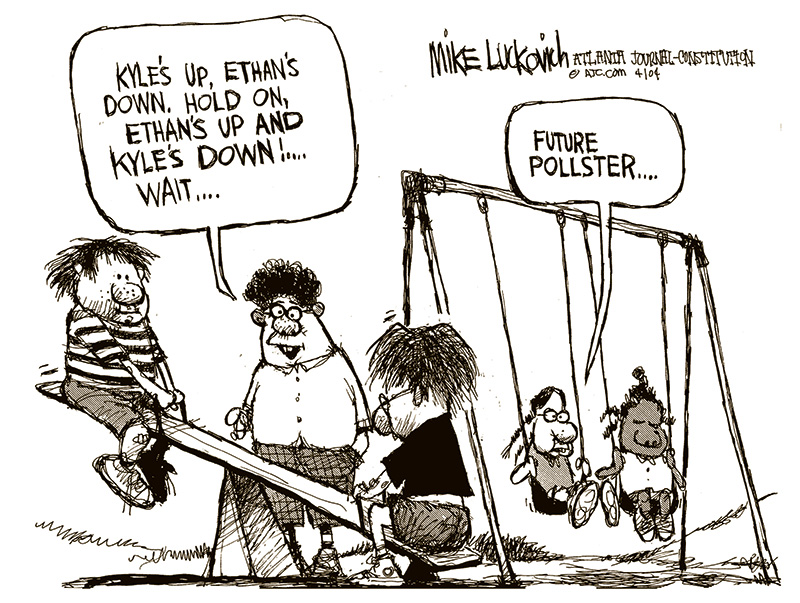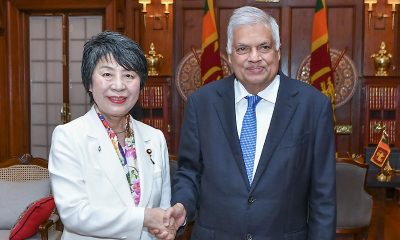Opinion
A simple, immediate solution to potentially dangerous shortage of air traffic control officers

BY Capt. G A Fernando MBA
gafplane@sltnet.lk
RCyAF/ SLAF, Air Ceylon, AirLanka, SIA, Sri Lankan Airlines.
And CAASL
In a recent interview conducted by Chamuditha Samarawickrama of Truth with Chamuditha fame with Thisara Amarananda, President of the Sri Lanka Air Traffic Controllers’ Association (SLATCA), it was revealed that the existing cadre of Air Traffic Control Officers was dangerously low due to migration of senior Air Traffic Control Officers (ATCOs) seeking more lucrative jobs abroad.
There are only 80 ATCOs instead of the required 138. They currently work overtime to keep air traffic services going. If four more ATCOs leave, it will lead to cumulative fatigue which may eventually bring the services provided in Sri Lankan airspace to a halt.
As a possible consequence our airspace of over 60,000 square nautical miles will be carved out amongst adjoining or regional countries such as Indonesia, Australia, Maldives and India. Sri Lanka will lose valuable foreign exchange revenue amounting to an average of $35,000 per day, derived from payment by airlines for flying through Sri Lankan airspace. Sri Lanka in turn provides the carriers with flight monitoring and traffic Information, and search and rescue facilities.
An Air Traffic Controller’s job is unique, requiring a good standard of English and communication skills. While the job generally maintains a lower profile than most others in the eyes of the general public, the service is provided day in and day out 24/7. Maintaining the flow of aircraft in and out of airports and en route is essential to aviation safety. This is also why the work of Air Traffic Control is rated as one of the most stressful in the world (Montgomery, 2010).
ATCOs function at three levels. (1) Aerodrome Controllers who use their eyes and ears while in the control tower of an airport up to an altitude of about 4,000 feet; (2) Approach Controllers who monitor and control air traffic on radar from 4,000 feet to 15,000 feet; and (3) Area Controllers (from Ratmalana) who control traffic above 15,000ft on radar and Controller Pilot Data Link Communications (CPDLC) when beyond line of sight. (Radar works on line-of-sight only.) It is obvious that a competent ATCO cannot be produced overnight.
The aviation environment is generally assumed, by the general public in particular, to be safe. The importance and significance of an ATCO’s job will only come into focus in the event of a high-profile incident or accident. In the past, all control and separation of air traffic was maintained by the use of headings and altitudes provided to the aircraft, known as ‘tactical radar vectoring’. With the introduction of new/future air navigation systems, separation of the majority of aircraft arrivals and departures at airports are looked after automatically. As a result, old skills of Air Traffic Controllers are lost and new skills have to be learnt. Separation and sequencing of aircraft could be done en route, long before their arrival at the destination airport. Because all aircraft are still not equipped with future air navigation systems, and the air traffic control systems are in the process of being modernised, the Air Traffic Controller enforces a ‘mixed mode’, i.e. controlling the old and the new, adding further stress to the conduct of the job.
The job of an Air Traffic Controller requires extensive training, knowledge, experience and skill, enabling the individual to ensure a safe, expeditious and orderly flow of air traffic with economy, collectively known as ‘Air Traffic Management’ (ATM). According to Costa (1996), there are six main ‘Stressors’ that affect the Job of Air Traffic Controllers: (1) Demand; (2) Operating Procedures; (3) Working times; (4) Working tools; (5) Working environment; and (6) Work Organisation.
(1) Demand: The number of aircraft under the purview of an Air Traffic Controller will constantly vary during a given duty period. The stress factor is directly proportional to this number. Accordingly, there will be highs and lows in the Air Traffic Controller’s workload during a given duty period. There could be unanticipated, nonessential traffic causing distractions, as well as unexpected events such as bad weather, medical and technical emergencies occurring in air traffic under their control.
(2) Standard Operating Procedures: Another stress factor is the need to operate within Standard Operating Procedures (SOP) required by the relevant organisations (Airport and Aviation Ltd and Civil Aviation Authority Sri Lanka) while striving to perform under constant, real-time pressure, sometimes creating the need to even bend the rules to get the work done. Working on the edge of maintaining control while realising the terrible consequences of a genuine human error adds to the anxiety and stress.
(3) Working Times: The working times could be any time of day or night and the Air Traffic Controller is expected to work at 100 percent efficiency (and nothing less) irrespective of the circadian (body clock) lows. Usually the job involves shift duties which sometimes lead to extended duty time to cover for an absent colleague. This adds to the stress. (Job and Home)
(4) Working Tools: The equipment an Air Traffic Controller has to work with, such as microphones, headsets, telephones, badly designed control panel layouts and radar display screens that may be old and outdated, is another source of stress. On the other hand, there is the need to become competent with futuristic technology for Communication, Navigation and Surveillance (CNS), including (CPDLC). The controllers need to regularly attend training courses and certification, to update themselves, thereby causing stress.
(5) Work Environment: Noise, light, temperature, ventilation, sitting posture, cafeteria and rest facilities, coupled with lack of seclusion from the distractions of the outside world, create stress for the Air Traffic Controller.
(6) The Work Organisation: Relationships with colleagues, salary, sometimes responsibility without authority. With the advent of Future Air Navigation Systems (FANS), there is a change of roles and responsibilities of the Air Traffic Controllers, and is bound to be stressful.
In Sri Lanka all ATCOs are University Mathematics graduates who had applied for the job as advertised in the Government Gazette. They had little or no knowledge of what the work involved. Therefore, they have to be orientated and trained ‘from scratch’. Unlike in the past in Sri Lanka, and the practice in other parts of the world, no qualified pilots were recruited to the job. The last pilot in the system retired in 2017.
Now, SriLankan Airlines has yet again advertised for Cadet Pilots and Junior First Officers. It is estimated that there are almost 200 eligible applicants. Unfortunately, many are called but only a few are selected. The selection process is not fool-proof, but considered to be the best under the circumstances.
Flight training is expensive. The requirement for eligibility is knowledge to sit and pass the Air Transport Pilots’ Licence (ATPL) theory examination and have enough flying experience and skill to be awarded a Commercial Pilots’ Licence and Instrument Rating (CPL/IR) with a twin-engine qualification endorsed on the licence. This will cost the student pilot in excess of Rs. 10 million, and take more than two years to accomplish. One has to be at least 17 years old to start basic flying training. Some go to the USA for training and exposure. Some foreign universities offer a pilot’s licence with a degree.
Unquestionably, parents undergo untold hardship to put their children through flight school. Some even get into debt and mortgage their only property. That’s the stark reality. It may not be wrong to say that most candidates are from middle class families where parents make many such sacrifices to be able to fund their children’s training for a so-called glamorous job which pays high salaries.
Airlines today have a good safety record, and although not acknowledged by the west, since 1947 Air Ceylon, Air Lanka and SriLankan Airlines have not lost a single passenger due to an air accident. All lives lost resulted from acts of terrorism. The ATCOs too, should be given due credit for the unseen and unsung role they have played and continue to play to maintain safe skies over Sri Lanka.
Due to a bottleneck in the pilot training process, SriLankan Airlines cannot recruit large numbers at once. Usually, recruitment occurs once approximately every 18 months. Those who are unsuccessful in joining the national carrier the first time have to spend three to five years applying over and over again before they find a slot in their chosen career, or become over-age. Meanwhile some become instructors in the many flying schools, or secure airline jobs abroad, while the rest (read: majority) simply give up their ambitions of becoming a pilot. There are many variables in the selection process, with an element of luck playing a large part.
Make no mistake, most young people who aren’t selected as cadets or Junior First Officers are bright, talented, enthusiastic and eager to work in the aviation industry. It is their passion that keeps them going. Unfortunately, they are not utilised in other aviation fields like Air Traffic Control. This valuable resource of qualified but inexperienced pilots, trained at great expense to their parents and the country (the latter in terms of foreign exchange for fuel, spares and equipment), isn’t recognised by either the Civil Aviation Authority Sri Lanka (CAASL) or Airport and Aviation Services Ltd (AASL).
Rather than recruiting personnel ‘off the street’ as it were, these young lads and lasses could enhance the ATCO cadre as Aerodrome Controllers. They have basic aviation sense and airmanship (common sense) and will need minimum training. That’s how it was in the Sixties and seventies. While it is likely that many will later move on to their chosen profession as airline pilots, there will be a few who will opt to stay as ATCOs, thereby enriching the competency levels of the aviation industry. It is a case of resource management. This is how it happens in most parts of the world.
Could this be the solution to the potentially dangerous problem in Sri Lanka?
Opinion
Child food poverty: A prowling menace

 by Dr B.J.C.Perera
by Dr B.J.C.Perera
MBBS(Cey), DCH(Cey), DCH(Eng), MD(Paed), MRCP(UK), FRCP(Edin),
FRCP(Lon), FRCPCH(UK), FSLCPaed, FCCP, Hony FRCPCH(UK), Hony. FCGP(SL)
Specialist Consultant Paediatrician and Honorary Senior Fellow,
Postgraduate Institute of Medicine, University of Colombo, Sri Lanka.
Joint Editor, Sri Lanka Journal of Child Health
In an age of unprecedented global development, technological advancements, universal connectivity, and improvements in living standards in many areas of the world, it is a very dark irony that child food poverty remains a pressing issue. UNICEF defines child food poverty as children’s inability to access and consume a nutritious and diverse diet in early childhood. Despite the planet Earth’s undisputed capacity to produce enough food to nourish everyone, millions of children still go hungry each day. We desperately need to explore the multifaceted deleterious effects of child food poverty, on physical health, cognitive development, emotional well-being, and societal impacts and then try to formulate a road map to alleviate its deleterious effects.
Every day, right across the world, millions of parents and families are struggling to provide nutritious and diverse foods that young children desperately need to reach their full potential. Growing inequities, conflict, and climate crises, combined with rising food prices, the overabundance of unhealthy foods, harmful food marketing strategies and poor child-feeding practices, are condemning millions of children to child food poverty.
In a communique dated 06th June 2024, UNICEF reports that globally, 1 in 4 children; approximately 181 million under the age of five, live in severe child food poverty, defined as consuming at most, two of eight food groups in early childhood. These children are up to 50 per cent more likely to suffer from life-threatening malnutrition. Child Food Poverty: Nutrition Deprivation in Early Childhood – the third issue of UNICEF’s flagship Child Nutrition Report – highlights that millions of young children are unable to access and consume the nutritious and diverse diets that are essential for their growth and development in early childhood and beyond.
It is highlighted in the report that four out of five children experiencing severe child food poverty are fed only breastmilk or just some other milk and/or a starchy staple, such as maize, rice or wheat. Less than 10 per cent of these children are fed fruits and vegetables and less than 5 per cent are fed nutrient-dense foods such as eggs, fish, poultry, or meat. These are horrendous statistics that should pull at the heartstrings of the discerning populace of this world.
The report also identifies the drivers of child food poverty. Strikingly, though 46 per cent of all cases of severe child food poverty are among poor households where income poverty is likely to be a major driver, 54 per cent live in relatively wealthier households, among whom poor food environments and feeding practices are the main drivers of food poverty in early childhood.
One of the most immediate and visible effects of child food poverty is its detrimental impact on physical health. Malnutrition, which can result from both insufficient calorie intake and lack of essential nutrients, is a prevalent consequence. Chronic undernourishment during formative years leads to stunted growth, weakened immune systems, and increased susceptibility to infections and diseases. Children who do not receive adequate nutrition are more likely to suffer from conditions such as anaemia, rickets, and developmental delays.
Moreover, the lack of proper nutrition can have long-term health consequences. Malnourished children are at a higher risk of developing chronic illnesses such as heart disease, diabetes, and obesity later in life. The paradox of child food poverty is that it can lead to both undernutrition and overnutrition, with children in food-insecure households often consuming calorie-dense but nutrient-poor foods due to economic constraints. This dietary pattern increases the risk of obesity, creating a vicious cycle of poor health outcomes.
The impacts of child food poverty extend beyond physical health, severely affecting cognitive development and educational attainment. Adequate nutrition is crucial for brain development, particularly in the early years of life. Malnutrition can impair cognitive functions such as attention, memory, and problem-solving skills. Studies have consistently shown that malnourished children perform worse academically compared to their well-nourished peers. Inadequate nutrition during early childhood can lead to reduced school readiness and lower IQ scores. These children often struggle to concentrate in school, miss more days due to illness, and have lower overall academic performance. This educational disadvantage perpetuates the cycle of poverty, as lower educational attainment reduces future employment opportunities and earning potential.
The emotional and psychological effects of child food poverty are profound and are often overlooked. Food insecurity creates a constant state of stress and anxiety for both children and their families. The uncertainty of not knowing when or where the next meal will come from can lead to feelings of helplessness and despair. Children in food-insecure households are more likely to experience behavioural problems, including hyperactivity, aggression, and withdrawal. The stigma associated with poverty and hunger can further exacerbate these emotional challenges. Children who experience food poverty may feel shame and embarrassment, leading to social isolation and reduced self-esteem. This psychological toll can have lasting effects, contributing to mental health issues such as depression and anxiety in adolescence and adulthood.
Child food poverty also perpetuates cycles of poverty and inequality. Children who grow up in food-insecure households are more likely to remain in poverty as adults, continuing the intergenerational transmission of disadvantage. This cycle of poverty exacerbates social disparities, contributing to increased crime rates, reduced social cohesion, and greater reliance on social welfare programmes. The repercussions of child food poverty ripple through society, creating economic and social challenges that affect everyone. The healthcare costs associated with treating malnutrition-related illnesses and chronic diseases are substantial. Additionally, the educational deficits linked to child food poverty result in a less skilled workforce, which hampers economic growth and productivity.
Addressing child food poverty requires a multi-faceted approach that tackles both immediate needs and underlying causes. Policy interventions are crucial in ensuring that all children have access to adequate nutrition. This can include expanding social safety nets, such as food assistance programmes and school meal initiatives, as well as targeted manoeuvres to reach more vulnerable families. Ensuring that these programmes are adequately funded and effectively implemented is essential for their success.
In addition to direct food assistance, broader economic and social policies are needed to address the root causes of poverty. This includes efforts to increase household incomes through living wage policies, job training programs, and economic development initiatives. Supporting families with affordable childcare, healthcare, and housing can also alleviate some of the financial pressures that contribute to food insecurity.
Community-based initiatives play a vital role in combating child food poverty. Local food banks, community gardens, and nutrition education programmes can help provide immediate relief and promote long-term food security. Collaborative efforts between government, non-profits, and the private sector are necessary to create sustainable solutions.
Child food poverty is a profound and inescapable issue with far-reaching consequences. Its deleterious effects on physical health, cognitive development, emotional well-being, and societal stability underscore the urgent need for comprehensive action. As we strive for a more equitable and just world, addressing child food poverty must be a priority. By ensuring that all children have access to adequate nutrition, we can lay the foundation for a healthier, more prosperous future for individuals and society as a whole. The fight against child food poverty is not just a moral imperative but an investment in our collective future. Healthy, well-nourished children are more likely to grow into productive, contributing members of society. The benefits of addressing this issue extend beyond individual well-being, enhancing economic stability and social harmony. It is incumbent upon us all to recognize and act upon the understanding that every child deserves the right to adequate nutrition and the opportunity to thrive.
Despite all of these existent challenges, it is very definitely possible to end child food poverty. The world needs targeted interventions to transform food, health, and social protection systems, and also take steps to strengthen data systems to track progress in reducing child food poverty. All these manoeuvres must comprise a concerted effort towards making nutritious and diverse diets accessible and affordable to all. We need to call for child food poverty reduction to be recognized as a metric of success towards achieving global and national nutrition and development goals.
Material from UNICEF reports and AI assistance are acknowledged.
Opinion
Do opinion polls matter?

By Dr Upul Wijayawardhana
The colossal failure of not a single opinion poll predicting accurately the result of the Indian parliamentary election, the greatest exercise in democracy in the world, raises the question whether the importance of opinion polls is vastly exaggerated. During elections two types of opinion polls are conducted; one based on intentions to vote, published during or before the campaign, often being not very accurate as these are subject to many variables but exit polls, done after the voting where a sample tally of how the voters actually voted, are mostly accurate. However, of the 15 exit polls published soon after all the votes were cast in the massive Indian election, 13 vastly overpredicted the number of seats Modi’s BJP led coalition NDA would obtain, some giving a figure as high as 400, the number Modi claimed he is aiming for. The other two polls grossly underestimated predicting a hung parliament. The actual result is that NDA passed the threshold of 272 comfortably, there being no landslide. BJP by itself was not able to cross the threshold, a significant setback for an overconfident Mody! Whether this would result in less excesses on the part of Modi, like Muslim-bashing, remains to be seen. Anyway, the statement issued by BJP that they would be investigating the reasons for failure rather than blaming the process speaks very highly of the maturity of the democratic process in India.
I was intrigued by this failure of opinion polls as this differs dramatically from opinion polls in the UK. I never failed to watch ‘Election night specials’ on BBC; as the Big Ben strikes ‘ten’ (In the UK polls close at 10pm} the anchor comes out with “Exit polls predict that …” and the actual outcome is often almost as predicted. However, many a time opinion polls conducted during the campaign have got the predictions wrong. There are many explanations for this.
An opinion poll is defined as a research survey of public opinion from a particular sample, the origin of which can be traced back to the 1824 US presidential election, when two local newspapers in North Carolina and Delaware predicted the victory of Andrew Jackson but the sample was local. First national survey was done in 1916 by the magazine, Literary Digest, partly for circulation-raising, by mailing millions of postcards and counting the returns. Of course, this was not very scientific though it accurately predicted the election of Woodrow Wilson.
Since then, opinion polls have grown in extent and complexity with scientific methodology improving the outcome of predictions not only in elections but also in market research. As a result, some of these organisations have become big businesses. For instance, YouGov, an internet-based organisation co-founded by the Iraqi-born British politician Nadim Zahawi, based in London had a revenue of 258 million GBP in 2023.
In Sri Lanka, opinion polls seem to be conducted by only one organisation which, by itself, is a disadvantage, as pooled data from surveys conducted by many are more likely to reflect the true situation. Irrespective of the degree of accuracy, politicians seem to be dependent on the available data which lend explanations to the behaviour of some.
The Institute for Health Policy’s (IHP) Sri Lanka Opinion Tracker Survey has been tracking the voting intentions for the likely candidates for the Presidential election. At one stage the NPP/JVP leader AKD was getting a figure over 50%. This together with some degree of international acceptance made the JVP behave as if they are already in power, leading to some incidents where their true colour was showing.
The comments made by a prominent member of the JVP who claimed that the JVP killed only the riff-raff, raised many questions, in addition to being a total insult to many innocents killed by them including my uncle. Do they have the authority to do so? Do extra-judicial killings continue to be JVP policy? Do they consider anyone who disagrees with them riff-raff? Will they kill them simply because they do not comply like one of my admired teachers, Dr Gladys Jayawardena who was considered riff-raff because she, as the Chairman of the State Pharmaceutical Corporation, arranged to buy drugs cheaper from India? Is it not the height of hypocrisy that AKD is now boasting of his ties to India?
Another big-wig comes with the grand idea of devolving law and order to village level. As stated very strongly, in the editorial “Pledges and reality” (The Island, 20 May) is this what they intend to do: Have JVP kangaroo-courts!
Perhaps, as a result of these incidents AKD’s ratings has dropped to 39%, according to the IHP survey done in April, and Sajith Premadasa’s ratings have increased gradually to match that. Whilst they are level pegging Ranil is far behind at 13%. Is this the reason why Ranil is getting his acolytes to propagate the idea that the best for the country is to extend his tenure by a referendum? He forced the postponement of Local Governments elections by refusing to release funds but he cannot do so for the presidential election for constitutional reasons. He is now looking for loopholes. Has he considered the distinct possibility that the referendum to extend the life of the presidency and the parliament if lost, would double the expenditure?
Unfortunately, this has been an exercise in futility and it would not be surprising if the next survey shows Ranil’s chances dropping even further! Perhaps, the best option available to Ranil is to retire gracefully, taking credit for steadying the economy and saving the country from an anarchic invasion of the parliament, rather than to leave politics in disgrace by coming third in the presidential election. Unless, of course, he is convinced that opinion polls do not matter and what matters is the ballots in the box!
Opinion
Thoughtfulness or mindfulness?

By Prof. Kirthi Tennakone
ktenna@yahoo.co.uk
Thoughtfulness is the quality of being conscious of issues that arise and considering action while seeking explanations. It facilitates finding solutions to problems and judging experiences.
Almost all human accomplishments are consequences of thoughtfulness.
Can you perform day-to-day work efficiently and effectively without being thoughtful? Obviously, no. Are there any major advancements attained without thought and contemplation? Not a single example!
Science and technology, art, music and literary compositions and religion stand conspicuously as products of thought.
Thought could have sinister motives and the only way to eliminate them is through thought itself. Thought could distinguish right from wrong.
Empathy, love, amusement, and expression of sorrow are reflections of thought.
Thought relieves worries by understanding or taking decisive action.
Despite the universal virtue of thoughtfulness, some advocate an idea termed mindfulness, claiming the benefits of nurturing this quality to shape mental wellbeing. The concept is defined as focusing attention to the present moment without judgment. A way of forgetting the worries and calming the mind – a form of meditation. A definition coined in the West to decouple the concept from religion. The attitude could have a temporary advantage as a method of softening negative feelings such as sorrow and anger. However, no man or woman can afford to be non-judgmental all the time. It is incompatible with indispensable thoughtfulness! What is the advantage of diverting attention to one thing without discernment during a few tens of minute’s meditation? The instructors of mindfulness meditation tell you to focus attention on trivial things. Whereas in thoughtfulness, you concentrate the mind on challenging issues. Sometimes arriving at groundbreaking scientific discoveries, solution of mathematical problems or the creation of masterpieces in engineering, art, or literature.
The concept of meditation and mindfulness originated in ancient India around 1000 BCE. Vedic ascetics believed the practice would lead to supernatural powers enabling disclosure of the truth. Failing to meet the said aspiration, notwithstanding so many stories in scripture, is discernable. Otherwise, the world would have been awakened to advancement by ancient Indians before the Greeks. The latter culture emphasized thoughtfulness!
In India, Buddha was the first to deviate from the Vedic philosophy. His teachers, Alara Kalama and Uddaka Ramaputra, were adherents of meditation. Unconvinced of their approach, Buddha concluded a thoughtful analysis of the actualities of life should be the path to realisation. However, in an environment dominated by Vedic tradition, meditation residually persisted when Buddha’s teachings transformed into a religion.
In the early 1970s, a few in the West picked up meditation and mindfulness. We Easterners, who criticize Western ideas all the time, got exalted after seeing something Eastern accepted in the Western circles. Thereafter, Easterners took up the subject more seriously, in the spirit of its definition in the West.
Today, mindfulness has become a marketable commodity – a thriving business spreading worldwide, fueled largely by advertising. There are practice centres, lessons onsite and online, and apps for purchase. Articles written by gurus of the field appear on the web.
What attracts people to mindfulness programmes? Many assume them being stressed and depressed needs to improve their mental capacity. In most instances, these are minor complaints and for understandable reasons, they do not seek mainstream medical interventions but go for exaggeratedly advertised alternatives. Mainstream medical treatments are based on rigorous science and spell out both the pros and cons of the procedure, avoiding overstatement. Whereas the alternative sector makes unsubstantiated claims about the efficacy and effectiveness of the treatment.
Advocates of mindfulness claim the benefits of their prescriptions have been proven scientifically. There are reports (mostly in open-access journals which charge a fee for publication) indicating that authors have found positive aspects of mindfulness or identified reasons correlating the efficacy of such activities. However, they rarely meet standards normally required for unequivocal acceptance. The gold standard of scientific scrutiny is the statistically significant reproducibility of claims.
If a mindfulness guru claims his prescription of meditation cures hypertension, he must record the blood pressure of participants before and after completion of the activity and show the blood pressure of a large percentage has stably dropped and repeat the experiment with different clients. He must also conduct sessions where he adopts another prescription (a placebo) under the same conditions and compares the results. This is not enough, he must request someone else to conduct sessions following his prescription, to rule out the influence of the personality of the instructor.
The laity unaware of the above rigid requirements, accede to purported claims of mindfulness proponents.
A few years ago, an article published and widely cited stated that the practice of mindfulness increases the gray matter density of the brain. A more recent study found there is no such correlation. Popular expositions on the subject do not refer to the latter report. Most mindfulness research published seems to have been conducted intending to prove the benefits of the practice. The hard science demands doing the opposite as well-experiments carried out intending to disprove the claims. You need to be skeptical until things are firmly established.
Despite many efforts diverted to disprove Einstein’s General Theory of Relativity, no contradictions have been found in vain to date, strengthening the validity of the theory. Regarding mindfulness, as it stands, benefits can neither be proved nor disproved, to the gold standard of scientific scrutiny.
Some schools in foreign lands have accommodated mindfulness training programs hoping to develop the mental facility of students and Sri Lanka plans to follow. However, studies also reveal these exercises are ineffective or do more harm than good. Have we investigated this issue before imitation?
Should we force our children to focus attention on one single goal without judgment, even for a moment?
Why not allow young minds to roam wild in their deepest imagination and build castles in the air and encourage them to turn these fantasies into realities by nurturing their thoughtfulness?
Be more thoughtful than mindful?
























